The iPhone XS & XS Max Review: Unveiling the Silicon Secrets
by Andrei Frumusanu on October 5, 2018 8:00 AM EST- Posted in
- Mobile
- Apple
- Smartphones
- iPhone XS
- iPhone XS Max
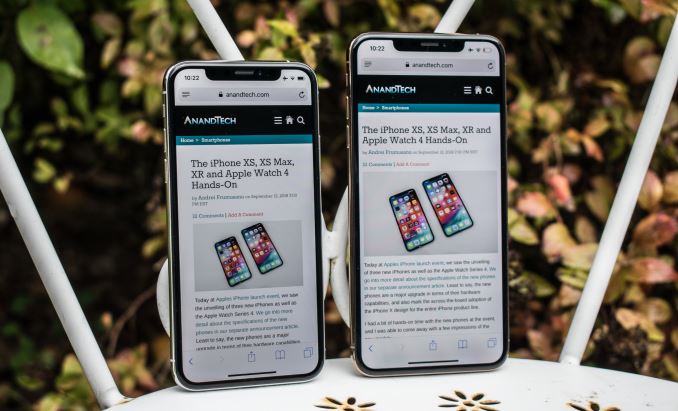
It’s been a little over three weeks since Apple unveiled the new iPhone XS, XS Max and the XR. The new flagship line-up is one of Apple’s most important ones to date; this year we’re seeing the company expand last year’s new iPhone X design across all of its new models, meaning big changes for all users. 2018 has been an odd year for the smartphone market as more than ever before we saw the competition try to react and also mimic the iPhone X – the design language especially has been something that we saw replicated across a lot of various designs.
Instead of iterating on the design, Apple has stayed true to its “S” generation release tradition and doubled down on what we saw last year with the iPhone X, all the while expanding the design across new form-factor phones as well. Today we review the first two of this year’s three new models: the iPhone XS, and its bigger brother the iPhone XS Max. The iPhone XR unfortunately releases later on this month – so we'll be taking a look at it separately.
Today we’ll be going into the detail of all aspects of the phone, included a much awaited deep dive of the new A12 SoC. Given Apple's ever-growing focus on the camera capabilities of their phones, I have also prepared an extensive camera comparison for this review – comparing shots across different modes on 14 devices. Hang in tight, this is a long one.
Starting off, let’s go over the specifications of the new iPhone XS and XS Max:
| Apple 2018 iPhone XS Specifications | |||
| iPhone XS | iPhone XS Max | ||
| SoC | Apple A12 Bionic 2 × Vortex @ 2.5GHz 4 × Tempest @ 1.59GHz |
||
| GPU | 4-core "G11P" @ >~1.1GHz | ||
| DRAM | 4GB LPDDR4X | ||
| Display | 5.8-inch OLED 2436×1125 DCI-P3/True Tone 625 cd/m² brightness 1M:1 contrast ratio 3D Touch |
6.5-inch OLED 2688×1242 DCI-P3/True Tone 625 cd/m² brightness 1M:1 contrast ratio 3D Touch |
|
| Size | Height | 143.6 mm | 157.5 mm |
| Width | 70.9 mm | 77.4 mm | |
| Depth | 7.7 mm | 7.7 mm | |
| Weight | 177 grams | 208 grams | |
| Battery Capacity | 2658mAh / 10.13Wh | 3174mAh / 12.08Wh | |
| Wireless Charging | Qi | ||
| Rear Cameras | 12 MP 1.4µm pixels, f/1.8, OIS Wide Color Gamut Quad LED True Tone Flash Portrait Mode, Portrait Lighting, Depth Control |
||
| 12 MP f/2.4 Telephoto, OIS 2x Optical Zoom Portrait Mode, Portrait Lighting, Depth Control |
|||
| Front Camera | 7MP f/2.2 Wide Gamut, Retina Flash, Portrait Mode, Portrait Lighting, Depth Control |
||
| Storage | 64 GB 256 GB 512 GB |
64 GB 256 GB 512 GB |
|
| I/O | Apple Lightning | ||
| Wireless (local) | 802.11ac Wi-Fi with 2x2 MIMO + Bluetooth 5.0 + NFC | ||
| Cellular | Intel XMM7560 Modem UE Category 16 LTE (1Gbps) with 4x4 MIMO and LAA |
||
| Splash, Water, Dust Resistance | IP68 up to 2 meters, up to 30 minutes |
||
| Dual-SIM | nano-SIM + eSIM nano-SIM + nano-SIM (China model) |
||
| Launch Price | 64 GB: $999 256 GB: $1149 512 GB: $1349 |
64 GB: $1099 256 GB: $1249 512 GB: $1449 |
|
At the heart of the new iPhones is the brand new Apple A12 SoC. The new chipset is the very first consumer piece of silicon that is being manufactured on TSMC’s new 7nm process. The new process promises greater transistor density and reduced die area of the chip, which gives Apple the ability to cram in more transistors in the same area, ultimately increasing the complexity and capabilities of the new SoC. We’ll go into more detail about the process node in a dedicated section, but least to say, in terms of sheer transistor counts it’s a healthy jump for Apple’s newest design.
The SoC’s CPU complex is now powered by two new “Vortex” CPU cores running at up to 2.5GHz, providing new levels of high performance. Apple claims the new CPUs perform around 15% better than last year’s A11 Monsoon cores – here it seems the company’s marketing was a tad conservative as the real performance figures of the new CPU are significantly higher. Alongside the performant Vortex cores, we see four new smaller efficiency cores named “Tempest”. The new small cores bring some performance improvements, but it’s mostly in terms on power and power efficiency where we see Tempest make some bigger leaps.
The A12’s GPU is the G11P – here Apple has made the biggest performance claims, advertising up to 50% higher figures. We’ll see how the new successor to last year’s A11 GPU in its dedicated section.
On the memory and storage side of things, we now finally see a significant boost in main memory capacity, as both the iPhone XS and XS Max sport 4GB of LPDDR4X RAM, up from 2GB and 3GB in the iPhone 8/X family. In terms of storage capacity, the new models come in 64, 256 and 512GB tiers. Here it’s a tad disappointing to see the base model come in at only 64GB, I think offering 128GB would have resulted in a much more even distribution in the models.
Front and centre of the new iPhones is the new “Super Retina” OLED display. Apple first introduced OLED displays in its lineup in the iPhone X – and the new iPhone XS and XS Max are a continuation of that panel, with an obviously bigger iteration for the Max. The displays are outright fantastic and among the best in the market, offering a fully colour managed wide "Display P3" gamut, very high brightness up to 650 cd/m², and excellent viewing angles. The iPhone XS has the same resolution as last year’s iPhone X, at 2436 x 1125 pixels, while the XS Max maintains the same pixel density by increasing the pixel count to 2688 x 1242.
On the back side, both phones are again a continuation of the iPhone X design. The glass back offers NFC and wireless charging capabilities. Wireless charging has seen an upgrade and claims to be able to charge faster, and also improve on the off-centre and off-axis charging performance.
Apple has worked with Corning to create a new formulation that is said to improve durability and scratch resistance. I’ll leave the testing of this to other people!
The sides of the phones come in highly glossy “surgical grade” steel. While I do appreciate Apple’s intent here, and I understand some people have personal preferences, I’m not a big fan of such finishes as I find them impractical and more slippery than the anodised aluminium of previous generation iPhones. It’s also a hell of a fingerprint magnet.
While the iPhone XS is more or less indistinguishable from the iPhone X – the one visual difference between the new and old is found in the lower left and upper right corners. The left microphone grill has halved its size and is only three holes wide now. Here Apple has introduced two new antenna cut-outs in the corners that serve the two new cellular antennas which enable the iPhone XS’ to achieve 4x4 MIMO.
Indeed in terms of cellular connectivity, the new iPhones boast a significant jump as we’ve seen an upgrade in download speeds to a gigabit for LTE networks. In terms of internals, this was achieved by now exclusively adopting Intel’s new XMM7560 baseband platform. This is Intel’s first chipset to support CDMA and also the first modem to be manufactured on Intel’s own 14nm process.
On the camera side of things we see the same dual 12MP camera module configuration as on the iPhone X – a normal wide angle and a zoom lens. The big difference with the XS is the upgrade in sensor size from an area of 32.8mm² to 40.6mm². Because the lens has remained the same and also offers the same f/1.8 aperture, the increase of the sensor size results in a slightly wider field of view than last year’s models. Light sensitivity has been increased thanks to the bigger sensor, and hence, the bigger pixels, increasing in size from 1.22µm to 1.4µm. The telephoto lens remains largely similar, with a 12MP 2x zoom module.
The iPhone XS Max in contrast to the iPhone XS is just a much bigger device. Apple noted that it’s calling it the “Max” instead of the “Plus” denomination, because it has no added features, and is just a bigger variant of the smaller XS. Here I applaud Apple for not making any feature discrepancies based on the model size – something I really hated in the past with the dual camera being found only on the Plus models.
The iPhone XS Max has a 3174mAh/12.08Wh battery while the smaller XS features a 2658mAh/10.13Wh battery. While Apple calls this the biggest battery ever in an iPhone, and that’s true, Apple is still a tad behind the battery densities that Android manufacturers have now come to commonly use in larger form factor phones.
Again, in a comparison between the iPhone X and the new iPhone XS – you’ll be hard pressed to see the difference and you’ll really have to focus to find the new antenna cut-outs to tell them apart.
Meanwhile the iPhone XS Max is largely the same form-factor as the iPhone 8 Plus, although the Max is technically 0.7mm narrower and 0.9mm shorter. For users opting for the larger models, the biggest difference is of course the massive increase in screen size, and I have to say, the XS Max does look very good due to its sheer screen-to-body ratio, which is higher than the smaller XS.
Finally the last big mention before we go deep into our review the price of the new phones. These new models are not successors to the iPhone 8 and 8 Plus – something I imagine the iPhone XR will have much more success in achieving – but rather continuation of the new high price points of the iPhone X. The higher storage capacity price points in particular are exceptional, coming in at $1349 for the XS and $1449 for the XS Max. If the price is worth it for you, is something you best decide along with us as we go deeper into the hardware of the new phones.



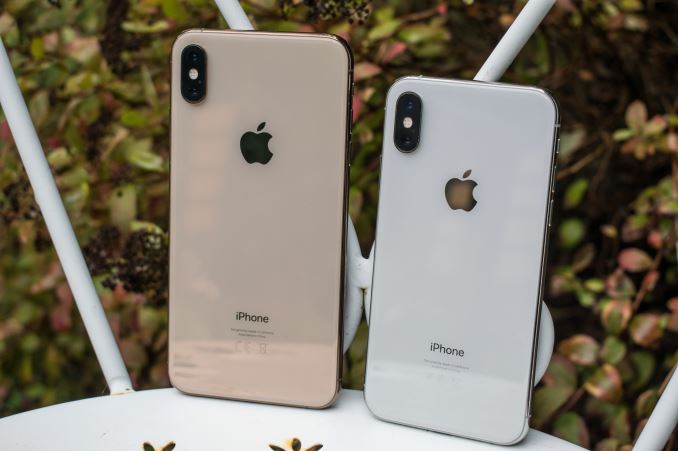

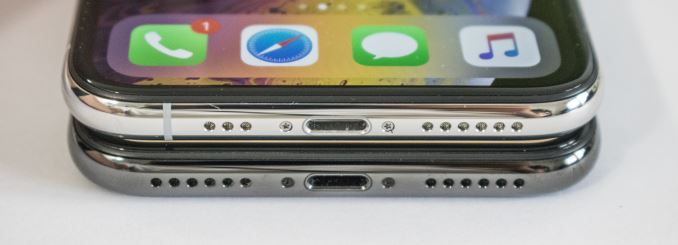
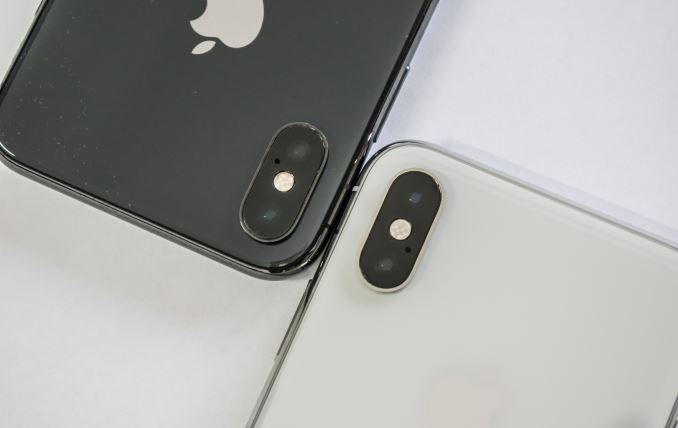
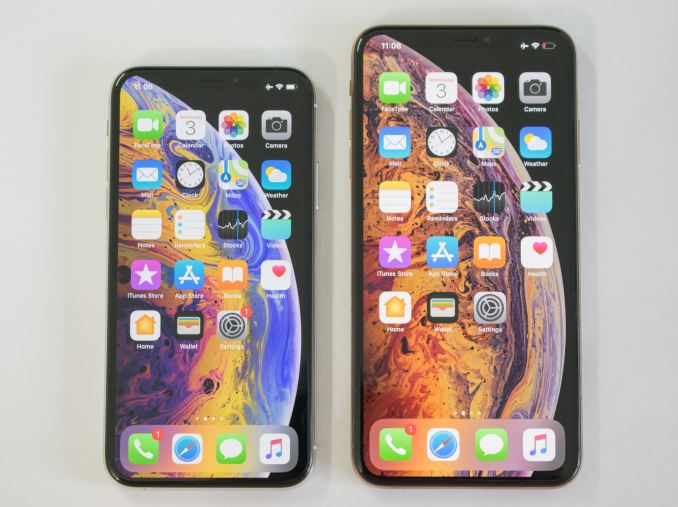
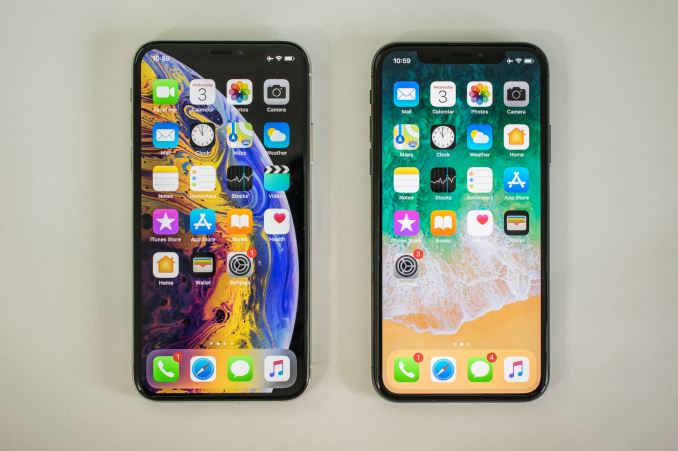
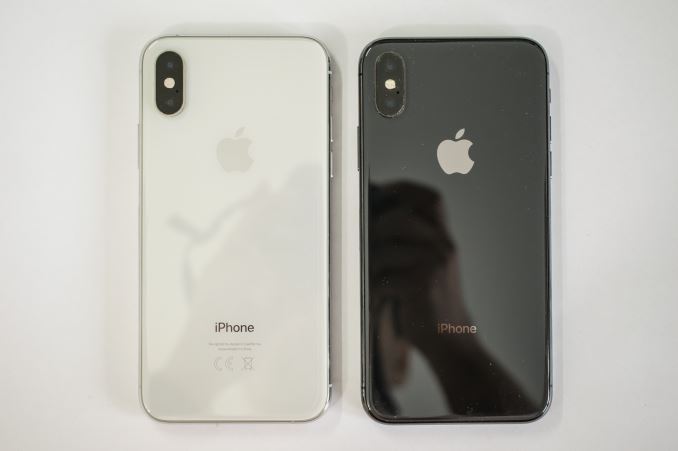
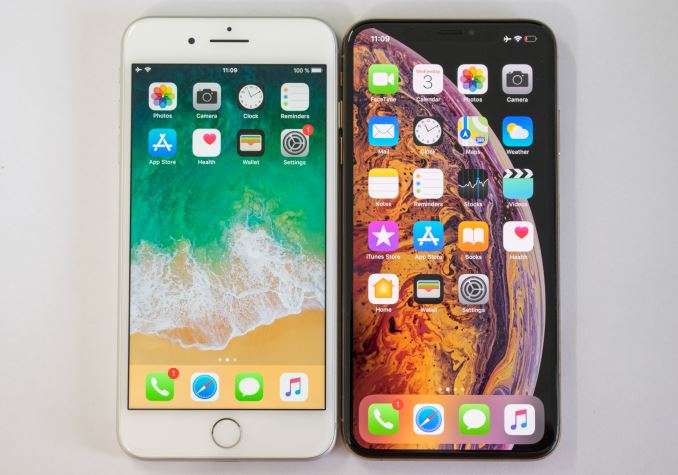
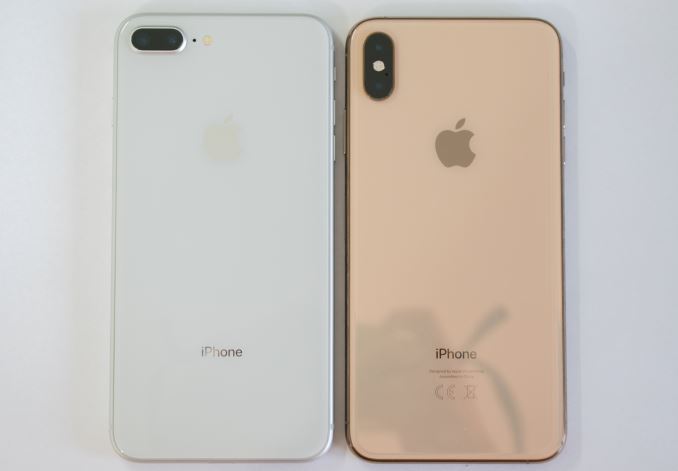








253 Comments
View All Comments
name99 - Friday, October 5, 2018 - link
"I do hope Samsung and Apple alike would be able to focus more on optimising this, as like we’re about to see, it will have an impact on battery life."Presumably Apple's longer term plan (next year?) is to move to the LTPO technology in the aWatch4 display?
https://appleinsider.com/articles/18/08/24/future-...
https://www.reddit.com/r/apple/comments/9ga4wa/dis...
This appears to be an Apple specific (ie non-Samsung) tech, though who knows exactly what the web of patents and manufacturing agreements ultimately specifies...
SanX - Friday, October 5, 2018 - link
Similar to mobile processors performance surpassing some desktop ones, the mobile devices image quality also surpassing 5-7 years old DSLR tech. Your photo test suite would be great if it adds the Still Life, Resolution and Portrait tests from the pro photo testing sites like Imaging-resource dot com. I'd just send the phones to these folks and they do their tests so we would see the progress in comparison with all cameras of all times and manufacturers. Right now only the fields tests of Anandtech look poor and are not enough to tell what is good and what is missing in the cameras. Due to the great progress, the time for such new deep testing of mobile devices came right now.Pneumothorax - Sunday, October 7, 2018 - link
No way my Xs Max is touching my 10 year old D700 with a cheap $100 50 1.8 lens in anything over base iso. The iPhone starts applying some serious noise reduction at higher ISO’s making it watercolor like. Even at base iso, the D700 has much better fine detail.Constructor - Sunday, October 7, 2018 - link
Not to dispute your fundamental point (bigger lenses and bigger sensors can't really be replaced), but there are several low-light photo apps for the iPhone which support much longer exposure than the standard one and this can of course help at least with static images when you've got a fixed position for the iPhone.yvn - Friday, October 5, 2018 - link
I was surprised you said excellent viewing angle, I disagree! If you tilt the screen just a little up or down, left or right, the color changes a lot, it becomes more blue as you tilt more and I couldn’t get used to this so I returned the phone, my iPhone 7 Plus had no such behavior.Notmyusualid - Friday, October 5, 2018 - link
So... dual-sim finally (only phone type I buy), 4x4 MIMO, 7nm, but still no Android?!?Would it KILL Apple to offer an Android version, I mean really, would it? Even Sony broke in the end...
Guess they don't need my money, but nice handset, if a bit pricey.
cfenton - Saturday, October 6, 2018 - link
I can't tell if this is a serious comment. Apple makes something like 85% of the profit in the mobile phone market. They have absolutely no reason to even consider putting out an Android phone.Speedfriend - Tuesday, October 9, 2018 - link
Oh, that rubbish stat again. That is only in the narrowly defined mobile market. Apple makes its own OS, designs many of its own chips and controllers, sells its own insurance, runs its own app store and its own retail shops. It has many more parts of the overall value chain. For an accurate comparison, we would need to include what Qualcomm and Samsung make from SOCs, what Samsung and LG make from screens, what Samsung makes from memory etc.varase - Tuesday, October 23, 2018 - link
What, you kidding?I'm sure one reason for the push into custom silicon was because it was one thing Android OEMs couldn't copy.
Hifihedgehog - Saturday, October 6, 2018 - link
I am a little confused here by your rather bold assertion of desktop-class performance. Correct me if I am wrong, but aren’t the test results here for SPECint2006 inclusive of all cores whereas the Intel processor’s score you linked to is for a single thread. If so, then comparing six cores versus a single thread in a multithreaded desktop CPU is not very fair or valid. Again, I could be totally wrong but I just wanted to point this out.